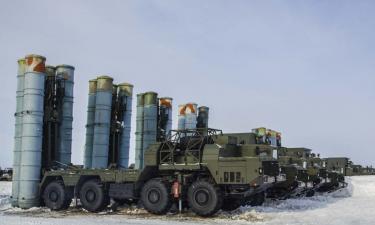NASA Desperately Looking for Soviet Moon Rover
It is very unclear why the US specialists insist on finding an old Russia spacecraft.

The work conducted on the Moon in the last century allows scientists to measure the distance to it with high degree of precision, up to a millimeter. Thanks to the equipment left on the Moon, we found out that the natural satellite moves away from Earth 38 millimeters a year.
To measure the distance between Earth and the Moon, a powerful laser beam is directed from Earth to the Moon, and then the time is calculated spent for the light to travel back and forth. Knowing the speed of light, we can calculate the distance.
The beam is directed at the so-called corner reflector. Its basic model consists of three mutually perpendicular, intersecting mirror surfaces. Any beam that gets to the mirrors is reflected back towards the source.
The reflectors installed on the Moon are more complex. Instead of mirrors they have prisms serving as reflecting panels.
Three corner reflectors were left on the Moon by American astronauts who came with the missions “Apollo-11”, “14” and “15”. Two reflectors were sent by Russia.
The first Russian reflector arrived to the Moon along with the automatic station “Luna-17” and was installed on the self-moving robot "Lunokhod-1". The second one was installed on “Lunokhod -2", delivered to the Moon in 1973 along with the station "Luna-21".
All reflectors but the one installed on "Lunokhod-1" are still functioning. In 1971, after a number of successful experiments with the reflector, the robot seemed to be missing. It was known for fact that it stopped in Mare Imbrium (Latin for "Sea of Showers" or "Sea of Rains") because laser impulses were sent there, but no answers were received.
It did not seem like a big deal. Yet, the Americans are trying to find it for some reason, searching the Moon’s surface with a laser beam. It is hard to miss something because the area of the light spot can reach 25 square kilometers.
According to Vladislav Trushev with the Rocket Propulsion Paboratory, NASA failed to find "Lunokhod-1" three years ago. Now, specialists from University of California, San Diego, measure the distance to the Moon with the most precise equipment, a powerful telescope with a laser, in an observatory (Apache Point Observatory in Sunspot, New Mexico). They discovered that the work of the existing reflectors has worsened significantly.
It is very difficult to “catch millimeters” because it requires very sensitive equipment. Out of millions of billions of photons reflected from the Moon, only a few thousands come back to Earth detectors. This number constantly decreases .
According to Tom Murphy, head of research, efficiency of the reflectors has worsened more than ten-folds. The issues began between 1979 and 1984, and the situation keeps getting worse.
The scientist believes that soon it may be impossible to take measurements.
The only sound hypothesis suggests that the reflectors are either covered by the Moon dust or scratched, because the dust is abrasive. But what did make it move in four locations at the same time? It could not be the wind.
In any case, this does not explain why the Americans keep searching for the Russian robot. They may think that the reflectors installed on it could still work.
NASA is going to send its LRO now located in the Moon’s orbit to search for "Lunokhod-1". They plan to take high quality pictures of the spot where the Soviet equipment may be located to take a better look at it.
Komsomolskaya Pravda
Subscribe to Pravda.Ru Telegram channel, Facebook, RSS!



